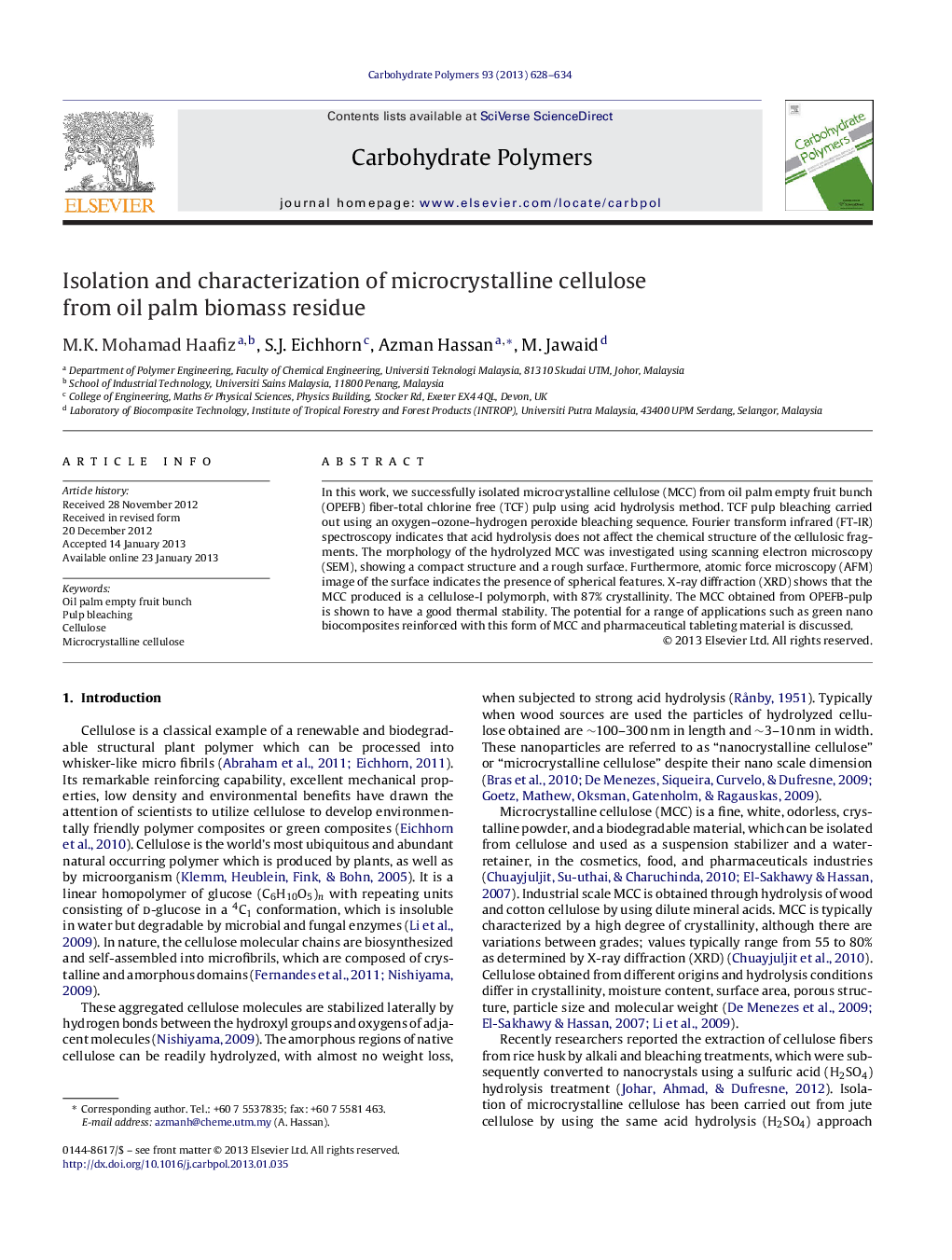| Article ID | Journal | Published Year | Pages | File Type |
|---|---|---|---|---|
| 1384372 | Carbohydrate Polymers | 2013 | 7 Pages |
In this work, we successfully isolated microcrystalline cellulose (MCC) from oil palm empty fruit bunch (OPEFB) fiber-total chlorine free (TCF) pulp using acid hydrolysis method. TCF pulp bleaching carried out using an oxygen–ozone–hydrogen peroxide bleaching sequence. Fourier transform infrared (FT-IR) spectroscopy indicates that acid hydrolysis does not affect the chemical structure of the cellulosic fragments. The morphology of the hydrolyzed MCC was investigated using scanning electron microscopy (SEM), showing a compact structure and a rough surface. Furthermore, atomic force microscopy (AFM) image of the surface indicates the presence of spherical features. X-ray diffraction (XRD) shows that the MCC produced is a cellulose-I polymorph, with 87% crystallinity. The MCC obtained from OPEFB-pulp is shown to have a good thermal stability. The potential for a range of applications such as green nano biocomposites reinforced with this form of MCC and pharmaceutical tableting material is discussed.
► Microcrystalline cellulose (MCC) was successfully isolated from oil palm biomass. ► Isolated MCC contains cellulose I with 87% crystallinity. ► MCC from OPEFB-pulp is shown to have good thermal stability. ► Atomic force microscopy shows that isolated MCC shows regular spherical particles.
